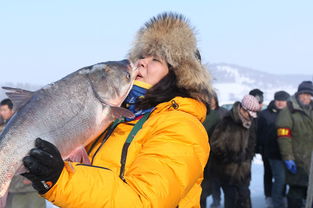Introduction:
The world of fishing is a timeless pastime that has captivated anglers for generations. From serene lakes to bustling rivers, the thrill of catching a fish can be as rewarding as the experience itself. However, it takes more than just patience to become a fishing master. In this article, we delve into the secrets and proven techniques used by the most skilled fishing maestros to ensure a successful day on the water.
Choosing the Right Equipment:
The foundation of any successful fishing trip is having the right equipment. Here are some key pieces of gear that every fishing master uses:
- Reel: A quality reel is essential for smooth casting and retrieving. Choose one that matches the type of fishing you'll be doing and the weight of your lures or bait.
- Rod: The right rod should be durable, lightweight, and appropriate for the species you're targeting. It should also have the right action for your preferred fishing style.
- Line: The type of line you use depends on the fish you're after and the conditions of the water. Monofilament, fluorocarbon, and braided lines each have their advantages and should be chosen based on your specific needs.
- Hooks: Hooks come in various sizes and shapes, so it's important to select the right ones for your bait and the fish you're targeting.
- Bait or Lures: Live bait, artificial lures, and flies all have their place in the angler's arsenal. The choice depends on the fish's preferences and the conditions of the water.
Understanding the Fish:
A fishing master knows that understanding the fish they're trying to catch is crucial. Here are some tips to help you gain insight into the habits and preferences of your target species:

- Habitat: Fish tend to congregate in specific areas, such as rocks, logs, or underwater structures. Knowing these habitats can help you find the fish.
- Feeding Patterns: Understanding when and what fish are feeding on can improve your chances of success. Research the species' diet and adjust your bait or lure accordingly.
- Water Conditions: The temperature, clarity, and depth of the water can all influence fish behavior. A master angler is always aware of these factors and adapts their approach accordingly.
Casting Techniques:
A master angler has a variety of casting techniques at their disposal, each tailored to different situations:
- Overhand Cast: This is the most common casting technique and is suitable for most situations. It involves lifting the rod tip above the shoulder and sweeping it forward with a wrist flick.
- Sidearm Cast: This technique is useful for casting over obstacles or into tight spaces. It involves holding the rod with the wrist near the handle and sweeping it to the side with a back-and-forth motion.
- Roll Cast: This is a great technique for casting into wind or over long distances. It involves rolling the line off the rod tip in a series of short, controlled movements.
Presenting the Bait or Lure:
Once you've cast your line, the way you present your bait or lure can make or break your catch. Here are some tips:
- Motion: The natural motion of your bait or lure can attract fish. Experiment with different retrieves to see what works best in your situation.
- Speed: The speed at which you retrieve your lure or move your bait can affect fish behavior. Sometimes, a slow and steady approach is best, while other times, a faster retrieve can trigger a strike.
- Timing: Pay attention to the timing of your lure presentation. A well-timed twitch or pause can sometimes be the difference between a strike and a miss.
Reading the Water:
A master angler has a keen eye for reading the water. Here are some tips to help you understand what's happening beneath the surface:
- Surface Activity: Look for fish feeding or spawning on the surface. This can indicate that the fish are active and may be more likely to bite.
- Water Movement: Pay attention to the movement of the water. Fish often congregate in areas with subtle currents or ripples.
- Structure: Look for underwater structures like rocks, logs, or weed beds. These areas can be prime spots for fish to hide and feed.
Patience and Persistence:
Lastly, no matter how skilled you are, fishing is still an art that requires patience and persistence. Here are some tips to help you stay focused and maintain your cool:
- Practice: The more you fish, the better you'll become. Practice your casting, knot tying, and lure presentation to improve your skills.
- Adaptability: Be prepared to change your approach if the fish aren't biting. Sometimes, even the smallest adjustments can make a big difference.
- Enjoyment: Remember that fishing is about the experience and the enjoyment of being outdoors. Don't get discouraged by a few bad days; stay positive and keep coming back.
Conclusion:
Becoming a fishing master takes time, practice, and a deep understanding of the sport. By using the proven techniques outlined in this article, you'll be well on your way to catching more fish and enjoying your time on the water. Whether you're a beginner or a seasoned angler, there's always something new to learn and improve upon. So, grab your gear, head to your favorite fishing spot, and put these techniques to the test. Happy fishing!












